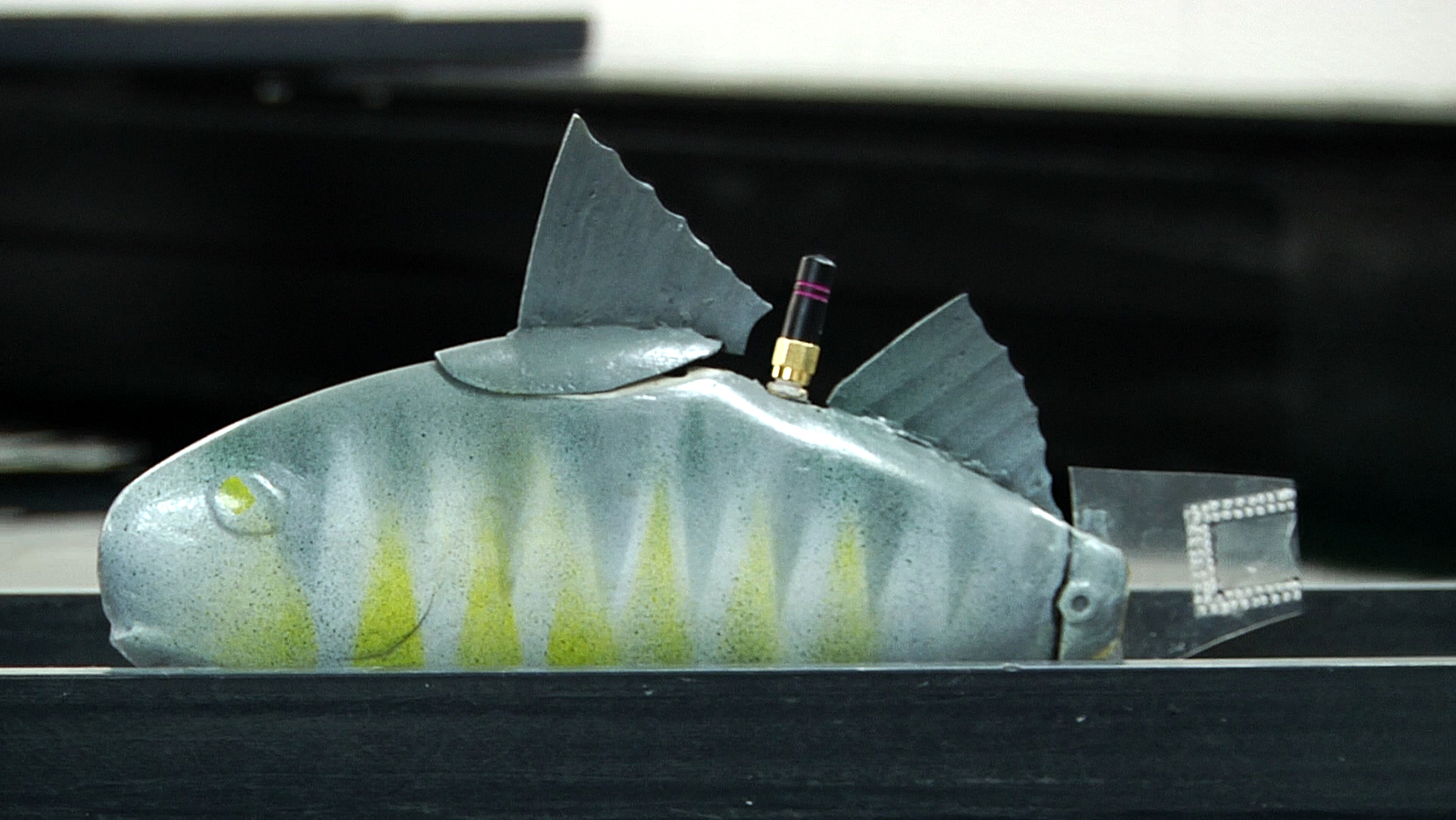A robotic fish prototype developed in the MSU laboratory of Xiaobo Tan. Source: Michigan State University

![]() Download Story
Download Story
By MEHAK BANSIL
Capital News Service
LANSING—If it looks like a fish and swims like a fish, then it must be a fish.
Unless it’s a pseudo-fish named NEMO, designed to monitor water temperature, oxygen levels, invasive algae populations and pollutants.
For example, a robofish will be able to navigate independently and transmit information about the location of toxic algae blooms.
“We chose to fit these fish with sensors for toxic algae blooms, but I think other researchers will use this technology in the future to monitor different aspects of water quality,” Michigan State University zoology Professor Elena Litchman said.
According to Litchman, excess nutrients and warmer temperatures create an ideal growth environment for algae, which release toxins that are dangerous to other aquatic organisms and humans.
“Although it’s hard to remove these blooms, knowing where they are allows us to warn people not to go in those areas,” Litchman said. “We can remove them by aerating the water, but that uses electricity, which increases global warming.”
By giving researchers and scientists an accurate picture of what’s going on underwater, the robofish will aid in the early identification of problems like an expanding invasive species population or other causes of declining native species.
“At first it was like science fiction, but now I think it’s going to be a reality,” Litchman said.
According to chief developer Xiaobo Tan, assistant professor of electrical and computer engineering at MSU, the robots won’t disturb their aquatic neighbors with loud electrical motors or awkward or jerking movements. They’ll be able to maneuver themselves in the water like real fish.
The polymer material Tan used in the prototype operates on electricity, activating fins that function like muscle fibers. The fins, which are powered by an internal lithium battery, move either when the remote control tells them to or, much like biofeedback, when the robot’s sensors and GPS indicate there is a reason to move.
Tan said he believes this technology should be affordable enough that it will have multiple applications. He said he’s designing the robofish to cost less than $1,000 per fish, but he doesn’t know when it will go into full production.
The project, funded by the National Science Foundation, cost about $410,000, Tan said. The background research for the project was another half million dollars.
“I believe the reason we were able to secure funding is because our fish can operate for three weeks to several months without being recharged,” Tan said. “Other researchers have been working on robotic fish since the 1990s, but I don’t think any can last that long without recharging.”
In case you were wondering, the fish’s full title is Navigating EAP-Controlled Module with Onboard Resources, NEMO.
© 2009, Capital News Service, Michigan State University School of Journalism. Not to be reproduced without permission.
Spartan Newsroom - News and information from student journalists at the Michigan State University School of Journalism
Spartan Newsroom (https://news.jrn.msu.edu/2009/11/nemos-new-mission-find-toxic-algae-blooms/)